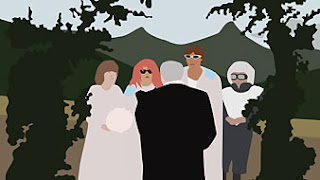
Known for capturing the desolate sadness mixed with the regularity of suburban homes, Todd Hido, with his new work, Between the Two enters inside the home. His interiors have the same isolation as his earlier work, maybe even more so as we see the small details of someone’s life splayed before the camera’s eye. These details are infected with a heavy sense of depression. The rooms are mostly vacant, yet they contain the stale leftovers of life. They resonate with dashed hope and beginnings that have definitely ended and the images are successful because they leave the viewer wondering – what life inhabited this space and what has become of it?
 Unfortunately Hido answers his own questions by interspersing portraits of woman in various states of undress in his installation at the Stephen Wirtz Gallery. Vacant women stare back at us, not quite beckoning, not quite challenging – just blank. I suspect this approach might work if Hido hadn’t included strictly women, but as installed, these women appear as sex workers or nude models with no conceptual theme linking them. You don’t wonder who they are as much as why are they allowed Hido to photograph them – or even worse, why are you looking at them? As portraits, the images don’t go beyond the physicality of their bodies reclining on or near a bed. And, their inclusion strips away the murky psychology that makes Hido’s work so engaging.
Unfortunately Hido answers his own questions by interspersing portraits of woman in various states of undress in his installation at the Stephen Wirtz Gallery. Vacant women stare back at us, not quite beckoning, not quite challenging – just blank. I suspect this approach might work if Hido hadn’t included strictly women, but as installed, these women appear as sex workers or nude models with no conceptual theme linking them. You don’t wonder who they are as much as why are they allowed Hido to photograph them – or even worse, why are you looking at them? As portraits, the images don’t go beyond the physicality of their bodies reclining on or near a bed. And, their inclusion strips away the murky psychology that makes Hido’s work so engaging.






